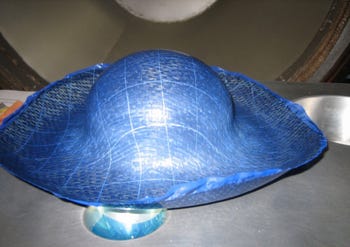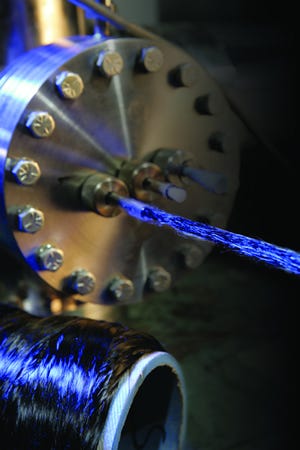Pepin Associates says its formable, aligned, discontinuous fiber fabric will help lower the cost barrier for carbon-fiber applications. The company says that thanks to their high strength-to-weight ratios fiber-reinforced materials are particularly appealing for the aviation and automotive industries, but the high-cost of carbon fiber and the limits of mass production of fiber-reinforced materials that require lay-up continue to stymie composites.
June 15, 2011
Pepin Associates says its formable, aligned, discontinuous fiber fabric will help lower the cost barrier for carbon-fiber applications. The company says that thanks to their high strength-to-weight ratios fiber-reinforced materials are particularly appealing for the aviation and automotive industries, but the high-cost of carbon fiber and the limits of mass production of fiber-reinforced materials that require lay-up continue to stymie composites.
Pepin says its formable fabric, called DiscoTex, can be made from carbon, glass, quartz, or ceramic fibers, resulting in a sheet that
DiscoTex composite hemisphere |
DiscoTex prepreg after being stretch-formed into a hemisphere. |
carbon fiber from a microwave-assisted plasma unit at ORNL. |
Carbon fiber from a microwave-assisted plasma unit at the Oak Ridge National Laboratory. |
is more formable that continuous-fiber fabrics, due to the ability of DiscoTex to stretch in the direction of reinforcement. Pepin says this capability can reduce or eliminate the need to cut and dart the material during lay-up.
DiscoTex fabric can be pre-pregged with thermosets, but the company is focusing on combining it with a thermoplastic, such as nylon 6. Pepin notes that DiscoTex is designed to more easily form complex shapes, with its ability to stretch in the reinforcement direction allowing for time savings in production. When DiscoTex is prepregged with epoxy, a flat layup can be stretch-formed into complex shapes such as a hemisphere. Demonstration parts for military aircraft using DiscoTex resulted in 35% overall cost savings as compared to production of parts with continuous fibers
The company has developed an energy-absorption crush-rail demonstration part for a subcompact car using an E glass/polyethylene terephthalate (PET) DiscoTex fabric. The PET fibers were spun from recycled 100% post-consumer soft drink bottles. The part was formed by pressurizing an internal bladder to consolidate the DiscoTex fabric against the walls of the female tool, with the PET melting and wetting out the glass fiber.
The company is currently fabricating what it calls a tow, consisting of an untwisted bundle of continuous filaments that combines discontinuous carbon fiber segments with continuous nylon tows. Pepin calls this combined, continuous/discontinuous tow a "cd tow". In the recycled PET part, Pepin said discontinuous glass fiber is used in the hoop direction of the structure. The company notes that consolidating layup into the corners of the part would be very difficult with continuous hoop fibers.
About the Author(s)
You May Also Like




